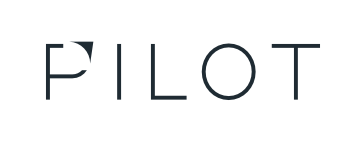Career Development Training That Doesn’t Promise a Promotion
When HR leaders and employees think of career development, they generally picture constant upward movement—a linear path where career ladders and defined roles serve as a proof point for growth. However, the types of development that can be seen on the org chart account for only a small fraction of the ways in which employees can grow.
Career development doesn’t have to be linear; many employees have no desire to be a manager or leader. And it’s impossible to offer upward trajectories to everyone when there are only a certain number of promotions available.
Yet, employees want to grow. Nearly three-quarters of global workers want to know about career opportunities within their organization, and nearly half are more satisfied if they can move towards those internal opportunities. Employees who don’t have this visibility into internal mobility are 61% more likely to quit!
So how can leaders offer the meaningful career development that employees crave without getting boxed in by the org chart?
Let’s dig into this tough question.
“Career Development” Needs a New Plan
To see what’s needed in the future, we first need to look at modern employees and their expectations for career growth. Gallup has found that 59% of millennials say that they find development opportunities extremely important when deciding whether to apply for a position. As Millennials are the largest generation in the U.S. labor force (35%), career development training is even more vital.
This means HR professionals need their plans for career development to be baked into their recruiting and retention strategies.
Creating this plan requires a radical rethinking of what success and development in an organization actually means. Remember—if your definition is role-based, it will always be much easier for employees to find some other company with that role than it will be for you to create it at your company.
The key word to focus on is “development”. As a leader, how do you define what that actually means and what it looks like?
Think about ways to activate employees in their daily lives. What are their strengths and weaknesses? Focus on helping them grow and mature in their current roles. Offer empowerment through training or tools. Coach them to take responsibility for their own development. Think about them as people, not just cogs in a machine. They’ll start worrying less about checking boxes towards a promotion they may not be ready for, and will start improving overall.
Helping employees gain more knowledge will help them feel more engaged.
Focus on Constant Possibilities Over Vertical Promotions
Your employees’ career development should focus on their current job. Instead of gunning for a new role, their current position can become a lab for experimentation, learning, and endless possibilities.
By adding continuous learning and development into your employees’ daily work, their environment becomes a hotbed for continual empowerment. You’ll see even more success if your managers use the EARS model.
Via CNBC
Let’s also not forget that, for some employees, the role in which they enter an organization is the role they want to stay in. Many are content and highly effective in their roles—and often they don’t reach their full potential until year three. These employees shouldn’t feel pressured to climb the ladder, but they deserve development opportunities, too. Similarly, those in flatter organizations, where promotions are less frequent, should have equal access to development opportunities.
Proactively providing development to employees such as these helps keep them passionate about the roles they joined your organization for. Meanwhile, you can still offer training for those who are excited to move into different roles. By valuing diverse career trajectories, organizations can cultivate a culture of inclusive development.
This ensures that every employee (regardless of their title or ambitions) has the chance to thrive. It’s a great way to foster a sense of belonging, one of the major keys to employee retention.
Register for a free webinar: The Power of Community in Learning
Embrace Alternative Thinking: Don’t Limit the Potential of Your Organization’s Future
Let’s not ignore one of the most powerful parts of a promotion—it offers a meaningful change to an employee. They’ve found themselves in a new role with new responsibilities and expectations. Obviously, that’s a great way to supercharge someone. However, promotions aren’t the only way to switch things up.
Don’t forget about the power of underused alternatives to promotions like role redesign, job rotation, dual career ladders, horizontal career paths, or access to additional opportunities.
Such approaches cater to the diverse needs and aspirations within a larger workforce.
To truly foster a culture of continuous learning and growth, you must detach the notion of development from the narrow confines of promotions. The broader perspective allows individuals to explore and develop skills that are not only beneficial for their personal growth, but invaluable to the long-term success of the organization.
It’s about exploring the full spectrum of possibilities, ensuring that each individual has the opportunity to evolve in a way that aligns with both their personal goals and the organization’s future.
Limiting Development Limits Employee Engagement and Growth
Given how important careers are in people’s lives, it’s helpful to remember that development is a multifaceted concept. Tying it solely to promotions can alienate key team members for whom a promotion might not be relevant or desired.
Limiting career development to hierarchical advancement means leaders risk stifling the potential of employees.
If you integrate horizontal career development training opportunities, like employee coaching programs, your organization will see the long-term benefits. Gallup research shows that positive changes in employee engagement are best attributed to changes in how organizations develop employees.
Want to create an actionable plan to develop your employees? Learn more about PILOT today!




